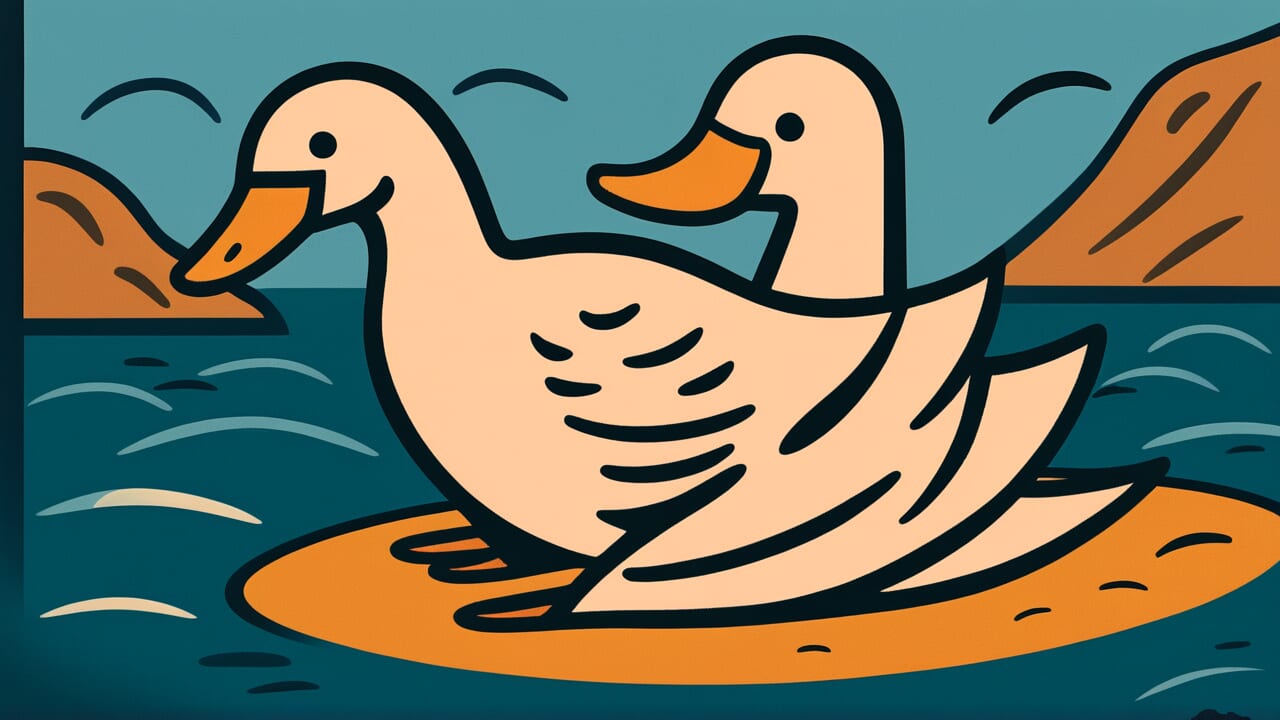How to Read “Carving a swan but resembling a duck”
Koku wo kokushite ahiru ni ruisu
Meaning of “Carving a swan but resembling a duck”
This proverb means that if you aim for an ideal and work hard, you’ll achieve above-average results even if you don’t reach your goal.
It comes from the idea that if you try to carve a swan, the most beautiful bird, you’ll at least create something as good as a duck, even if you don’t achieve a perfect swan.
People use this saying to encourage someone who hesitates to take on a high goal. It also helps convey the value of trying without fearing failure.
You can also use it to comfort someone whose results didn’t meet their ideal, recognizing the value of their effort.
In modern times, many people can’t take action because they seek perfection too much. Others fear failure excessively.
This proverb reminds us of the importance of trying. The higher your goal, the more you gain, even if you fall short.
Origin and Etymology
This proverb likely comes from ancient Chinese classics. “Koku” means swan, which has symbolized ideals and high goals because of its elegant, beautiful appearance.
“Ahiru” refers to a duck. While not as magnificent as a swan, ducks still have value as waterfowl.
The word “kokushite” means to carve or shape something. The proverb describes a situation where someone tries to carve a swan sculpture but doesn’t achieve perfection.
Instead, the result resembles a duck.
This saying conveys a positive idea that even failure has value. Even if you don’t reach the highest goal, the skills and experience you gain aren’t wasted.
They remain as above-average achievements.
After reaching Japan, many people embraced this way of thinking. It has been passed down for generations as words that teach the importance of having high goals.
At the same time, it gives people the courage not to fear failure, especially those who tend toward perfectionism.
Usage Examples
- I couldn’t get into medical school, but “Carving a swan but resembling a duck” – I got into nursing school because I kept aiming high
- I aimed to be an Olympic athlete but only made it to nationals, yet “Carving a swan but resembling a duck” – that’s still an excellent achievement
Universal Wisdom
Humans have always been creatures who seek perfection while also fearing failure. This proverb has been passed down through generations because it captures the human heart swinging between these two contradictory traits.
Having high ideals is wonderful. But how many people can’t take the first step because their ideals are too high?
Anxiety takes over their hearts. What if I fail? What if people laugh at me?
Our ancestors understood this human weakness. That’s why they left us this proverb with the message “It’s okay to fail.”
Even if you aim for a swan and create a duck, that’s far more valuable than aiming for nothing at all.
They knew that recognizing this fact is necessary for humans to move forward.
This proverb contains deep love for humanity. It’s okay not to be perfect. It’s okay to fail.
Just keep working hard with high goals – that’s what matters. This warmth continues to resonate with people across time.
When AI Hears This
In information theory, compressing data always involves choosing “what to keep and what to discard.” JPEG images, for example, remove subtle color changes that human eyes barely notice.
This reduces the original photo to one-hundredth of its size. It’s not a perfect copy, but we still recognize it as a photograph.
This proverb shows exactly this lossy compression process.
A sculpture that aimed for a swan but became a duck has succeeded in “partially reproducing the target data” from an information theory perspective.
In the high-dimensional feature space of neck length, feather texture, and beak shape, it has preserved the most important elements – the essential information of “waterbirdness.”
In machine learning terms, this is like avoiding overfitting and achieving generalization performance. Pursuing perfection in every detail can actually make you lose sight of the essence.
What’s interesting is that higher compression rates create more room for creativity. Picasso’s abstract paintings compressed reality to its limits and gained new beauty that the original subjects didn’t have.
The “error” born between swan and duck is the source of unexpected value. Not complete replication, but moderate information loss creates new creations.
This overlaps with the principle by which modern AI-generated images create new works rather than perfect copies of training data.
Lessons for Today
In modern society, we see other people’s successes on social media and feel down about our own imperfections. This proverb teaches us something important.
First, have high goals without fear. Rather than holding only small goals because you worry about failure, dreaming big and trying gives you more in the end.
Even if you don’t reach the summit, people who start climbing definitely reach higher places.
Second, value the process, not just the results. When you don’t reach your ideal, don’t dismiss it as mere failure.
Look at what you gained through your efforts. The experience and skills you accumulated are definitely your assets.
Finally, don’t compare yourself to others. Compare yourself to who you’d be if you hadn’t tried.
Even if you can’t become a perfect swan, becoming a duck is wonderful. You, who keep holding high goals, are already shining brightly.



Comments